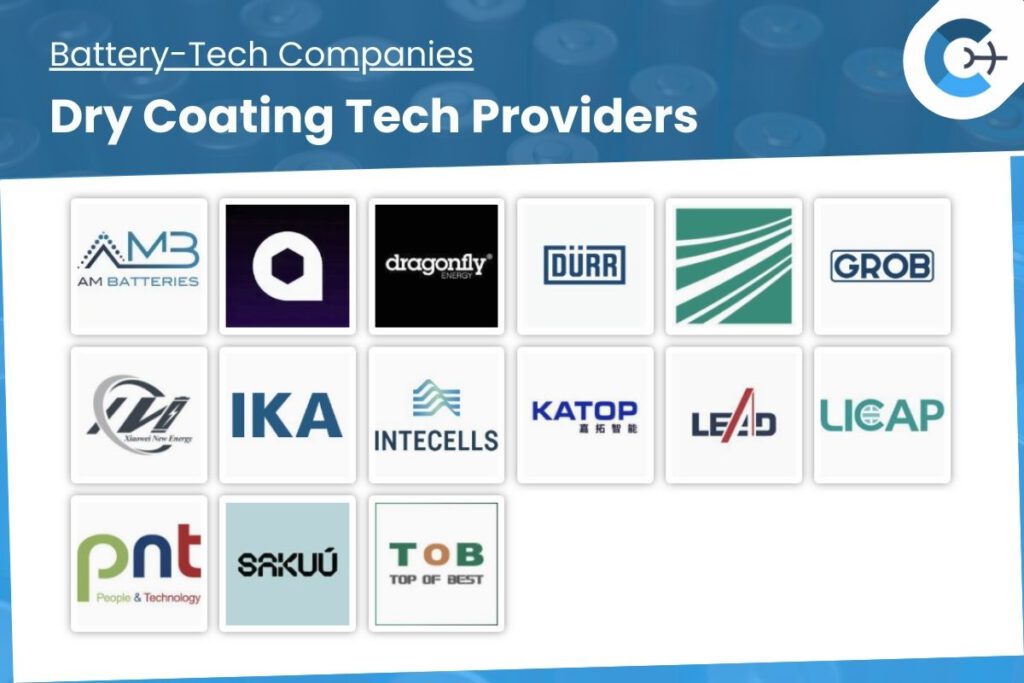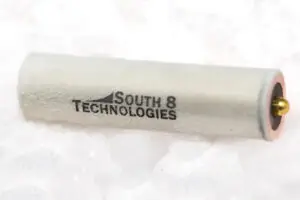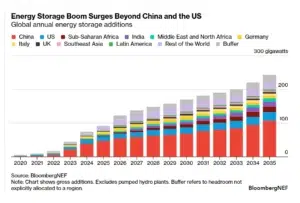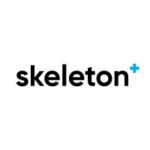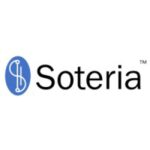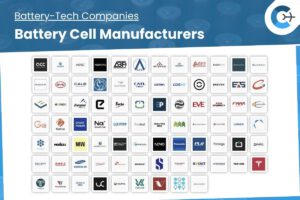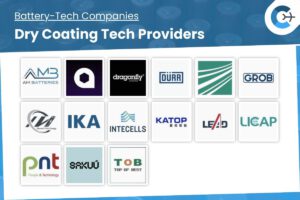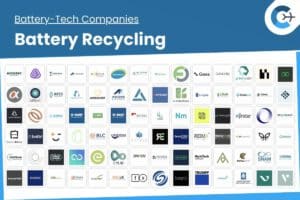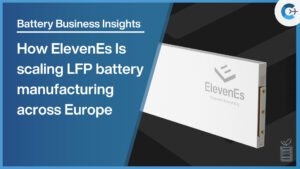Key Players in Battery Manufacturing Equipment
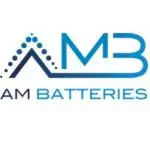
AM Batteries
AM Batteries, based in Chelmsford, MA, pioneers dry-electrode manufacturing with its proprietary Powder to Electrode™ technology for lithium-ion batteries. Their innovative process reduces energy use, costs, and carbon emissions, supporting electric vehicles and energy storage solutions.

Anaphite
Founded in 2018 in the UK, Anaphite specializes in advanced battery electrodes using its proprietary dry coating (DCP®) technology. This innovative process cuts energy consumption by up to 90%, lowers manufacturing costs, and enhances lithium-ion battery performance. Compatible with existing production lines, Anaphite partners with leading battery and automotive companies to deliver sustainable, high-performance energy solutions.

Ateios Systems
Ateios Systems develops solvent-free, energy-curable electrode manufacturing (RaiCure™) and high-energy RaiCore™ electrodes. Products are PFA-free, recyclable, and designed for faster, lower-emission production for electronics, medical, IoT, mobility, and storage.

Dragonfly Energy Corporation
Dragonfly Energy Corporation, founded in 2012 in Reno, Nevada, is a premier North American lithium-ion battery manufacturer. Specializing in LiFePO4 systems under the Battle Born Batteries brand, they serve RVs, industrial, and off-grid sectors. Leveraging patented dry electrode technology and smart management systems, Dragonfly Energy delivers innovative, reliable, and environmentally friendly energy storage solutions.
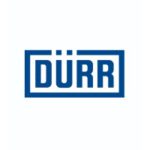
Dürr Group
Dürr Group is a global engineering pioneer specializing in automation, digitization, and battery production solutions. Originating in automotive painting, it now delivers efficient manufacturing systems across diverse industries.

Fraunhofer IWS
Fraunhofer IWS is a Dresden‑based applied research institute specializing in materials, laser processing, and battery manufacturing. It provides DRYtraec® dry electrodes, pilot cell production, laser joining, materials characterization, and filtration for safe scale-up.
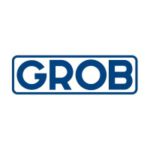
GROB-WERKE GmbH & Co. KG
GROB-WERKE GmbH & Co. KG, a family-owned leader since 1926, drives innovation in machining, assembly, and automation. Their advanced battery production technology enhances lithium-ion cell and module assembly, fueling electromobility.
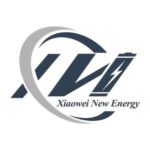
Guangdong Xiaowei New Energy Technology Co., Ltd
Xiaowei designs and manufactures battery materials and lab-to-pilot production equipment for lithium‑ion, solid‑state and sodium‑ion cells. The SCUT‑trained team supplies modular lines, testing systems and materials for EVs, energy storage and research.

IKA – Laboratory. Analytical and Process Technology
IKA – Laboratory, Analytical and Process Technology is a German family-run leader delivering advanced laboratory instruments and process solutions. Our technology supports scientific, industrial, and battery research globally.

Intecells Inc
Intecells Inc., founded in 2017 in Troy, Michigan, specializes in advanced lithium-ion battery manufacturing. Their proprietary ICPLAS and cold-plasma powder coating technology enables 3D printable electrodes, enhancing energy efficiency and reducing costs for sectors like consumer electronics and electric mobility.
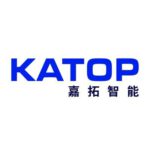
KATOP Automation
KATOP Automation, a global pioneer in lithium-ion battery equipment, leverages over 20 years of industry expertise. The company delivers innovative, end-to-end production solutions for EVs, grid storage, and advanced battery technologies.
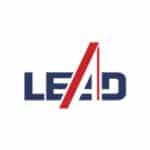
Lead Intelligent Equipment
Lead Intelligent Equipment Co., Ltd. (LEAD), headquartered in Wuxi, China, is a global leader in new energy manufacturing equipment. Specializing in lithium-ion batteries, solar energy, and automotive solutions, LEAD utilizes AI-driven technologies and holds over 2,700 patents to advance sustainable energy production.

LICAP Technologies Inc.
Founded in 2016 and based in Sacramento, LICAP Technologies develops advanced energy storage solutions using its proprietary Activated Dry Electrode technology. Specializing in ultracapacitors, lithium-ion capacitors, and solid-state batteries, LICAP serves renewable energy and electric vehicle sectors with high-performance, sustainable products.

PNT (People and Technology Inc.)
People and Technology Inc. (PNT) supplies roll-to-roll equipment, dry electrode systems and LFP materials for lithium-ion batteries, offering turnkey production lines and automation for EV, ESS and electronics manufacturers.

Sakuu
Sakuu Corporation, founded in 2016 in San Jose, California, specializes in 3D-printed lithium metal batteries aimed at reducing waste and dependency on traditional energy sources. The company’s Kavian platform leverages a dry, multi-material approach to enable custom-shaped batteries that feature enhanced thermal management and improved performance metrics.

Tob Machine
Tob Machine supplies battery manufacturing equipment, materials and turnkey production lines for lithium‑ion, sodium‑ion, solid‑state cells and supercapacitors, serving EV, energy storage and electronics manufacturers globally.
Dry Coating Technology for Battery Electrodes
Dry coating is a manufacturing method for battery electrodes that functions without the use of liquid solvents. It marks a significant shift from the conventional wet slurry process, which depends on mixing active materials into a liquid paste, applying it to a metallic foil, and then evaporating the solvent in large, energy-intensive ovens. By eliminating solvents and the drying step, dry coating technology directly addresses major cost, efficiency, and environmental concerns in battery production. This method is becoming instrumental for producing current and next-generation cells, including solid-state batteries, more sustainably and economically.
Key Characteristics of the Technology
The move away from a solvent-based system introduces several fundamental improvements to the electrode manufacturing process.
- Reduced Energy and Cost: The most direct benefit is the elimination of the large-scale industrial drying ovens and solvent recovery systems required in wet processing. This change can lower the energy consumption of a factory by approximately 30-40% and substantially reduces both capital expenditure for equipment and ongoing operational costs.
- Environmental and Safety Improvements: Conventional electrode production often uses N-Methyl-2-pyrrolidone (NMP), a toxic solvent that requires careful handling and recovery to mitigate health and environmental risks. Dry coating removes NMP and other solvents entirely, resulting in a safer work environment and a manufacturing process with a smaller ecological footprint.
- Enhanced Electrode Properties: Operating without liquids allows for the creation of thicker, more compact electrode layers with a higher concentration of active material. This increased density can lead to batteries with higher overall energy storage capacity. The process is also well-suited for sensitive materials used in solid-state batteries, which can be damaged by solvents.
- Streamlined Manufacturing: By removing the time-consuming drying stage, the dry coating process can achieve faster production speeds and requires a smaller factory footprint. This simplification of the production line contributes to greater manufacturing efficiency and throughput.
Technology Classifications / Types
Dry coating is not a single process but a category of techniques that apply dry powders to a current collector foil. The main variations are distinguished by how the materials are mixed and made to adhere to the foil.
- Dry-Mixing and Fibrillization: This approach uses a binder like Polytetrafluoroethylene (PTFE). During a high-intensity mixing step, shear force causes the PTFE to form a network of tiny fibers. This fibrous matrix physically entraps the active material and conductive additive particles, creating a self-supporting film that can then be laminated onto the current collector foil.
- Thermoplastic Binders and Lamination: In this method, a thermoplastic binder in powder form is mixed with the active materials. The dry mixture is then spread onto the current collector and heated. The heat activates the binder, causing it to melt slightly and bond the particles together and to the foil as it is pressed through rollers in a process called calendering. The roller-press system being developed by PowerCo and Koenig & Bauer is an example of this approach.
- Electrostatic Spraying: An alternative method involves electrostatically charging the dry powder mixture and spraying it onto an oppositely charged current collector foil. The electrostatic attraction holds the powder in place before it is further processed to create a permanent bond. AM Batteries’ “Powder-to-Electrode” technology uses this principle.
- Integrated Material-Collector Systems: Some approaches modify the current collector itself to improve adhesion and performance. Addionics, for instance, pairs the dry coating process with its 3D current collectors. The porous, three-dimensional structure of the foil provides a physical scaffold that helps lock the dry-coated material in place, improving mechanical stability and ion flow.
Development and Commercialization Challenges
- Material Mixing and Uniformity: Achieving a perfectly consistent and homogenous blend of active materials, binders, and conductive additives without a liquid medium is difficult. Inconsistent mixing can lead to defects in the final electrode, such as variations in density or performance.
- Binder-Foil Adhesion: Ensuring the dry electrode layer sticks securely to the thin metallic foil is essential for the battery’s longevity and performance. The bond must be strong enough to withstand the mechanical stress of calendering, cell assembly, and the expansion and contraction that occurs during battery cycling.
- Process Scalability and Speed: A process that works well at slow speeds in a lab must be adapted for high-speed, continuous roll-to-roll manufacturing to be economically viable. Maintaining quality and uniformity at speeds of 60-80 meters per minute or more requires highly specialized machinery and precise process controls.
- Quality Control: Traditional methods for inspecting wet-coated slurries are not applicable to a dry process. New in-line sensor systems and analytical techniques must be developed to monitor coating thickness, mass loading, and uniformity in real-time to ensure every part of the electrode meets specifications.
Recent Developments and Examples
- Tesla: Is widely recognized for integrating dry battery electrode (DBE) technology into the manufacturing of its 4680 battery cells, validating the process for high-volume automotive applications.
- PowerCo (Volkswagen) & Koenig & Bauer: This partnership is developing a roller press system for dry coating cathodes. The collaboration successfully completed a proof of concept in June 2025 and aims to begin full-scale industrial production by 2026, anticipating a 30% reduction in energy use.
- Fraunhofer IWS & FFB: These German research institutes are advancing the DRYtraec® process, a direct rolling method. Their goal is to industrialize the technology, with a pilot plant scheduled for commissioning in 2024 designed to achieve speeds of at least 20 m/min.
- AM Batteries: The company’s “Powder-to-Electrode” electrostatic spray method was recognized by TIME Magazine for its innovation. The process is designed to reduce energy use by up to 40% by spraying dry active materials directly onto the collector foils.
- Anaphite: This company focuses on solving the initial mixing challenge with its proprietary Dry Coating Precursor (DCP®) powders, which are formulated for easier processing. Anaphite secured $13.7 million in funding to scale up its technology.
- LiCAP Technologies: In August 2025, LiCAP commissioned a 300 MWh dry coating production line for cathodes using its Activated Dry Electrode® process. The technology is designed to be compatible with multiple battery chemistries, including lithium-ion and solid-state.
- Dürr Systems AG: Acting as a key systems integrator, Dürr is working with LiCAP and Cellforce (a Porsche subsidiary) to build a gigawatt-scale proof-of-concept line in France, demonstrating a clear path toward mass production of dry-coated electrodes.

